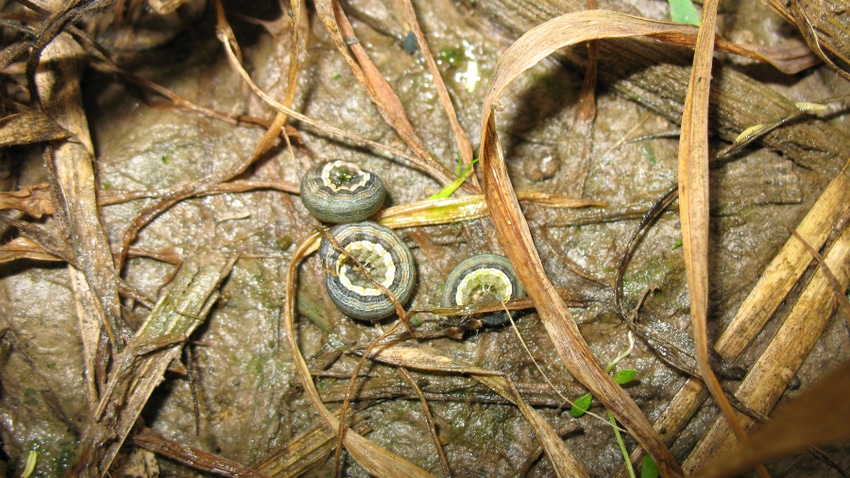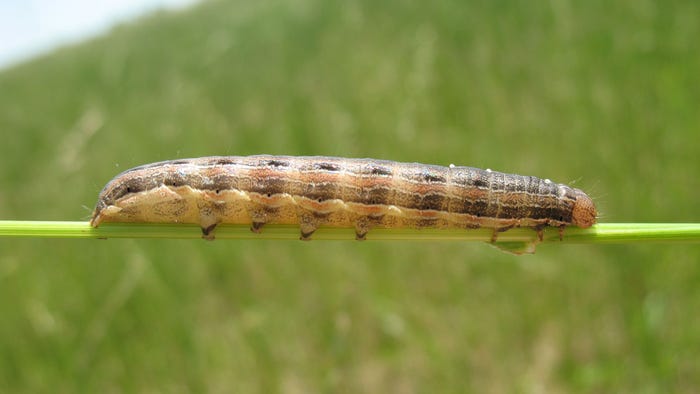
Missouri farmers are a little gun-shy when it comes to armyworms, as many recall the outbreak of 2021. This pest can cause extensive damage and has already been spotted across the state.
Tony Hancock, who is the market news manager for the Missouri Department of Agriculture, took to social media three weeks ago to warn of armyworm sightings in southwest Missouri.
Then during the first week of June, Lenny and Nan Keilholz, owners of Back Forty Farms in Chamois, Mo., shared their fight with true armyworms.
Identifying true armyworm larvae
True armyworm larvae have an orange stripe along each side of the body, and a dark spot or triangle on each of the abdominal prolegs located in the center of the body. The head is brown with honeycomb markings.
True armyworm typically feed on grass species, so pastures, wheat and corn crops are at highest risk. In pastures and wheat crops, treatment is justified when three or more non-parasitized, half-grown or larger larvae are present per square foot.

IDENTIFY PEST: Orange stripes run longitudinally down the body of a true armyworm larvae. It can also be identified by the dark triangular spots on the prolegs.
The insects will not only defoliate the plant, but clip seed heads as well. For seed crops, treatment is justified when 2% to 3% of the heads have been cut. For corn crops, the economic threshold is when 10% or more of the plants are injured and larvae are less than three-quarters of an inch.
If you observe threshold levels, treat the affected field quickly. You can use insecticides or harvest the forage by haying or grazing.
Importance of scouting
MU Extension agronomy specialist Sarah Kenyon says farmers should be scouting pastures, wheat fields and cornfields for true armyworms to avoid damage.
“Dusk or dawn is the best time to scout for the insect because the young larvae feed at night,” says the MU Extension agronomy specialist in West Plains. “During the heat of day, they will hide under plant debris on the ground.”
Farmers should continue scouting to verify the presence or absence of the parasites that can reduce some true armyworm population, Kenyon adds. Affected armyworms will be dark in color and mummified on the plant stalk. The larvae will typically be positioned with the head pointed downward.
Also, true armyworm moths could migrate in and reinfest an area, so scouting fields is critical, Kenyon adds.
Stay current on potential pests
Farmers can keep up to date with insect pressure in their region through the Mizzou Crop & Pest Text Alert system.
According to Mandy Bish, MU Extension specialist in field crop pathology, the tool allows state Extension specialists to share information quickly, which may include:
insect and disease alerts
emergency pesticide label changes
reminders for the pest management field day and other special events
links to Mizzou Crop & Pest newsletters
MU tracks and sends out warnings on these pests:
brown marmorated stinkbug
black cutworm
corn earworm
fall armyworm
Japanese beetle
true armyworm
To subscribe to the text service, complete the form or scan the QR code here.
Read more about:
ArmywormsAbout the Author(s)
You May Also Like






